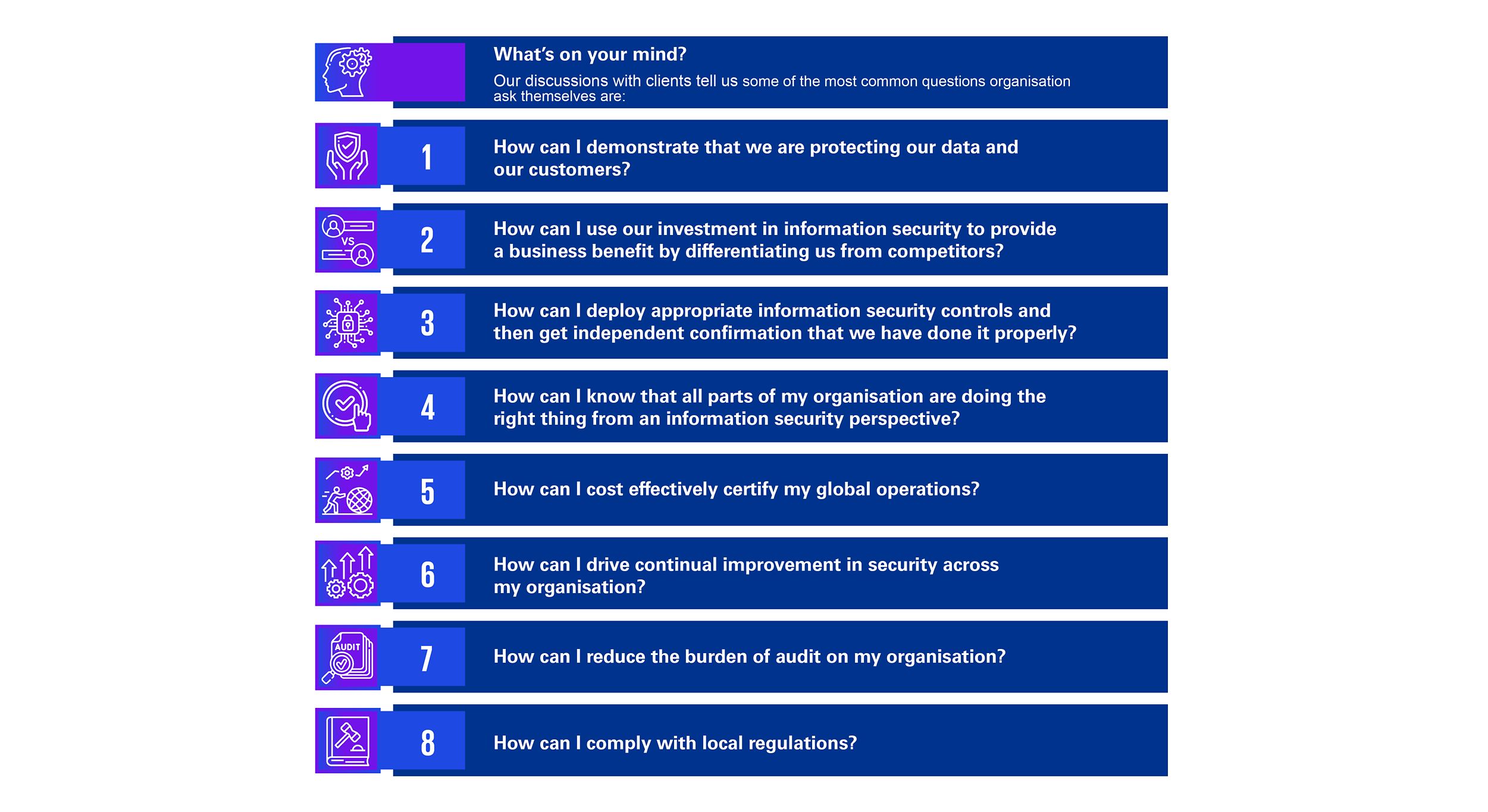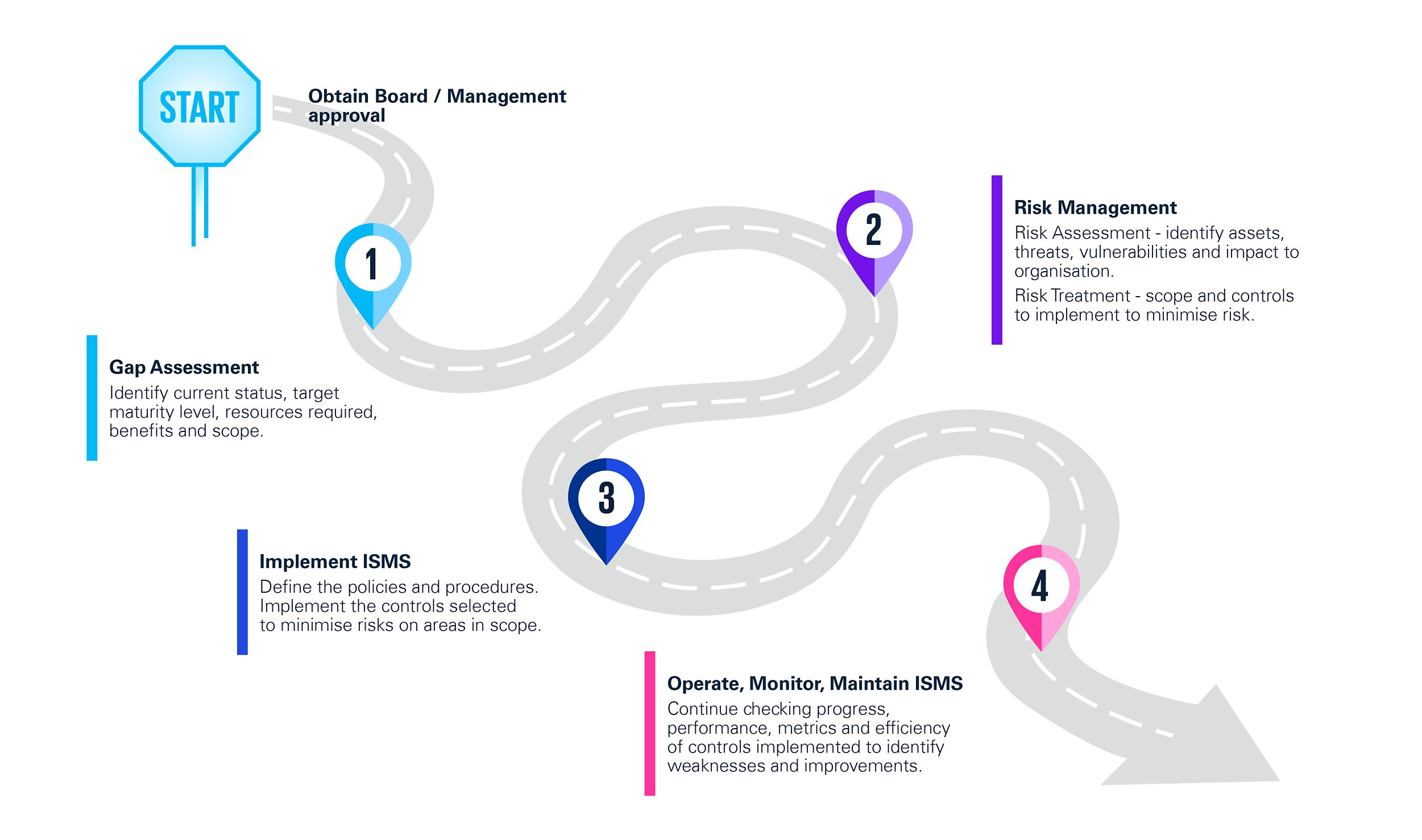Do you trust that your company effectively responds to today’s information security challenges? Are you aware of the aspects of information security management that require attention in your existing information security management framework?
Protecting one’s reputation and information is of paramount importance for all companies, as being trusted is a key element of success. ISMS compliance generates trust in the market, both by aspiring employees and businesses. It proves that data security is of utmost importance to you.
Aligning the organisation to the comprehensive characteristics of internationally recognised standards of an Information Security Management System (ISMS) will raise the profile of security within your organisation to ensure buy-in and support from senior stakeholders enabling the vital backing you need to embed the processes required for effective information security management.
What advantages does alignment to an Information Security Management System bring?
ISMS standards (such as ISO 27001) define a set of controls, processes and procedures to manage the vast majority of information security risks, but also provides often overlooked additional benefits:
- Alignment to an ISMS immediately increases the level of trust of interested parties, providing potential customers or business partners with assurance that your organisation and its employees take data security seriously.
- Efficiently reduces losses resulting from insufficient legal and regulatory compliance (e.g., GDPR, proposal of DORA (Digital Operational Resilience Act), MFSA, NIS Directive, PSD2, HIPAA, SOX).
- Helps to reduce the outage time caused by incidents, thus reducing any damage and increasing process efficiency and resilience.
- Helps harmonise business and IT aspects of an organisation to improve effective co-operation and achieving common goals.
- Increases security awareness among your employees, thus increasing organisational resistance to cyber theft or attack.
- Provides a continually improving security framework to provide confidentiality, integrity and availability to company assets and information stored, processed or transferred through them.

Get Started: Gap Analysis
Performing a gap analysis against the best practices and internationally recognised information security management system standards supports your understanding of the areas that require attention, potential necessary changes to policies, procedures, and work practices. If you wish to pursue internationally recognised certifications (such as ISO/IEC 27001 certification), such visibility allows your organisation to better gauge the state of readiness of the applicable Information Security Management System. This helps to reduce the risk of any unexpected major findings coming to light during the certification audit itself.
If you don’t wish to pursue the certification specifically, it also helps to align to an internationally recognised information security management system based on best practices to reduce the burden of audit of your organisation and help comply with local regulations.

How can KPMG help?
We can help you assess the maturity of your organisation’s information security and the divergence from best practice by performing information security management system framework Gap Analysis and Implementation Assessment.
Our level of involvement in your ISMS journey can be adapted to your specific needs, be it:
- Performing a gap analysis against a standard to identify the areas that require attention prior to or during the implementation of your ISMS (such as ISO/IEC 27001 certification).
- Helping with the initial scoping, assisting you in addressing gaps, right through to full implementation, to allow you to become fully compliant, or aligned to an ISMS. This can include planning the project, scoping the company assets, assessing risks, provide training, designing effective processes, practices, policies and standards.
- Identifying and implementing the right tools or products required to meet the required level of control.


